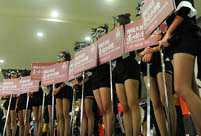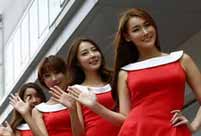Adhering to green and sustainable development
The economy of old Tibet was supported by farming, animal husbandry and handicrafts, very close to a backward natural economy. With the strenuous efforts of the local people, Tibet has established a modern economic system with local characteristics. Putting the people's interests first and seeking green and sustainable development, Tibet has adopted rigorous measures to rein in energy-extensive, high-pollution and high-emission industries. Integrating socioeconomic progress and environmental protection, Tibet strives to safeguard the long-term interests of its people.
Farming and animal husbandry are Tibet's traditional industries and also the supporting pillars of its economy. For decades such policies have been followed that allow the farmland and grassland to recuperate on a regular basis. And by delegating managerial authority to lower levels, cancelling the old agricultural tax, increasing capital and technical investment, and promoting comprehensive productivity, Tibet has realized balanced and sustainable development in farming and animal husbandry. The annual grain production in recent years stands above 900,000 tons. Tibet is vigorously developing agricultural products with local characteristics, and the added value of its primary industry increased from 128 million yuan in 1959 to 8.038 billion yuan in 2012, growing by 4.7 percent annually.
There was no modern industry in old Tibet, but after more than 60 years of development, modern industry has been established in Tibet from scratch, and it has grown considerably in size. Today Tibet has a modern industrial system comprising over 20 industries, including energy, light industry, textiles, machinery, mining, building materials, chemical industry, food processing, folk handicrafts and traditional Tibetan medicine. The total industrial output value skyrocketed from 1.4 million yuan in 1956 to 10.591 billion yuan in 2012. The major industries with local characteristics have been expanding in scale, and tertiary industry is also growing rapidly. In 2012, Tibet welcomed domestic and overseas tourists on 10.584 million occasions, including foreign visitors on 194,900 occasions. In the same year, the tourism industry in Tibet generated 12.65 billion yuan in revenue. The proportionate layout of Tibet's industrial structure in terms of primary, secondary and tertiary industries was 11.5 : 34.6 : 53.9.
【11】 【12】 【13】 【14】 【15】 【16】 【17】 【18】 【19】 【20】
【21】 【22】 【23】


 No news of survivors in Lao Airlines crash
No news of survivors in Lao Airlines crash Five fighters in flight training
Five fighters in flight training London mayor hails free trade, subway system on China tour
London mayor hails free trade, subway system on China tour Different eye catching shows at housing fairs in China
Different eye catching shows at housing fairs in China Chalk it up to great courage
Chalk it up to great courage Tibetan girl helps mobilize volunteers onlin
Tibetan girl helps mobilize volunteers onlin Lingerie show dazzles Wuhan Motor Show 2013
Lingerie show dazzles Wuhan Motor Show 2013  Chinese screen goddesses from Beijing Film Academy
Chinese screen goddesses from Beijing Film Academy  Weekly Sports Photos
Weekly Sports Photos Bayi Parachute Team of PLA Air Force
Bayi Parachute Team of PLA Air Force World has never been dark-- a blind kid’s life in Tibet
World has never been dark-- a blind kid’s life in Tibet Change to law may make it easier to sue polluters
Change to law may make it easier to sue polluters UNESCO world heritage site: Montale Tower
UNESCO world heritage site: Montale Tower U.S. Senate leader announces bipartisan deal
U.S. Senate leader announces bipartisan deal Fiber-optic wedding dress show shinning in Suzhou
Fiber-optic wedding dress show shinning in Suzhou Day|Week|Month